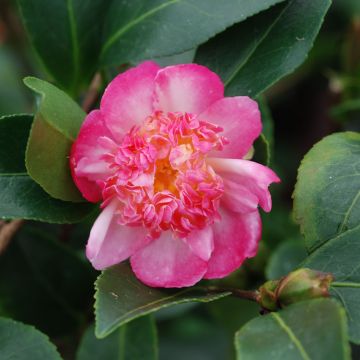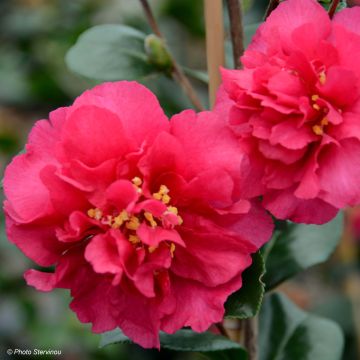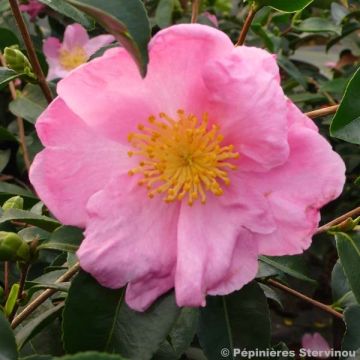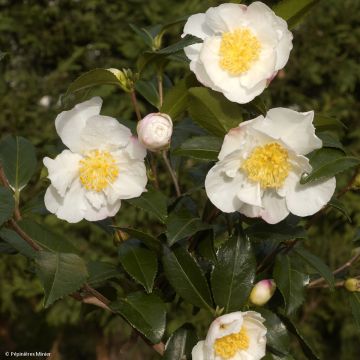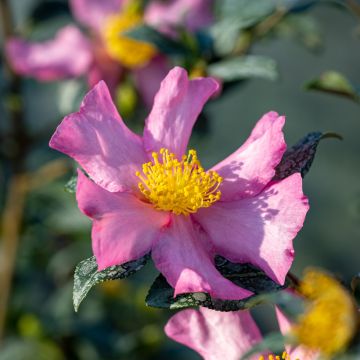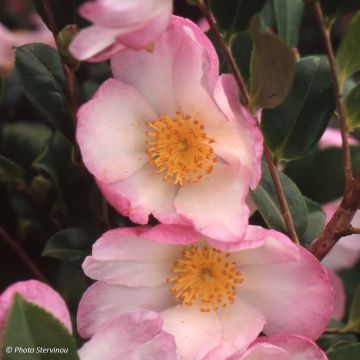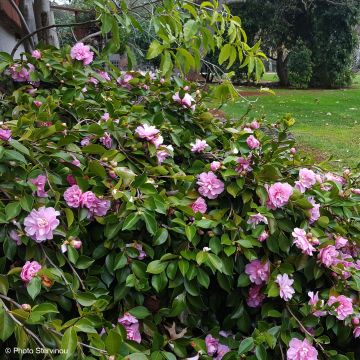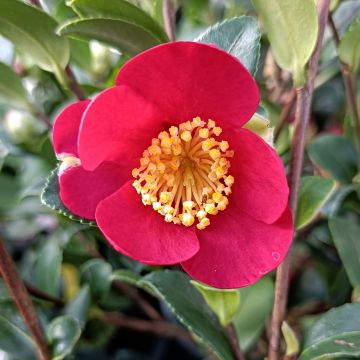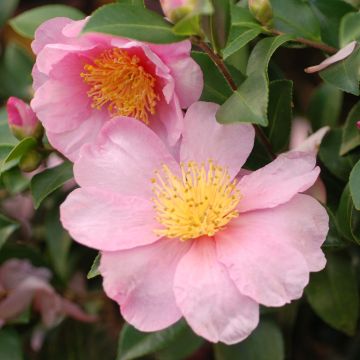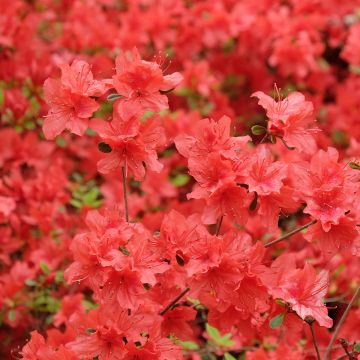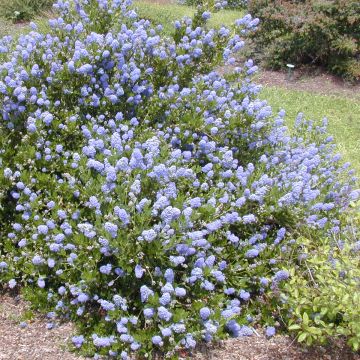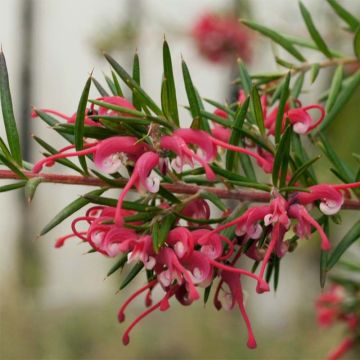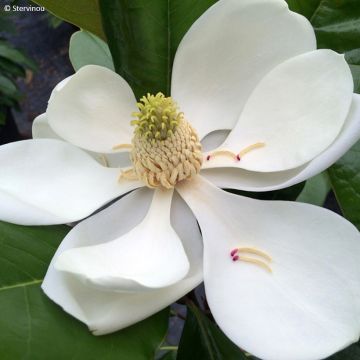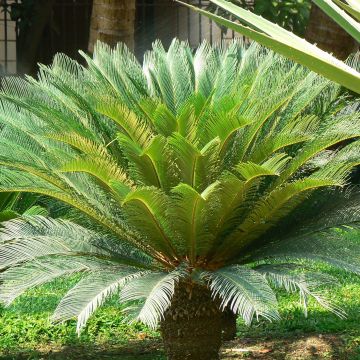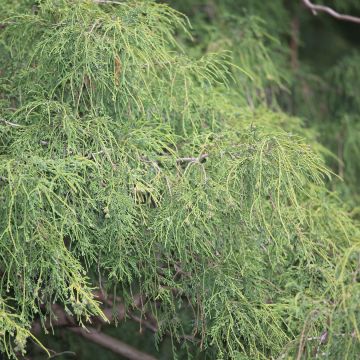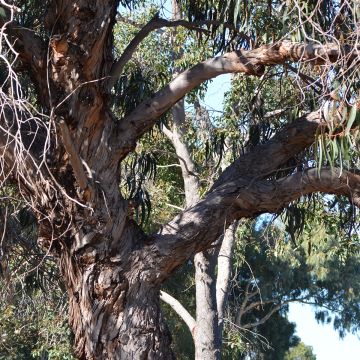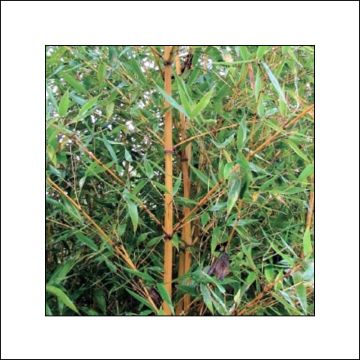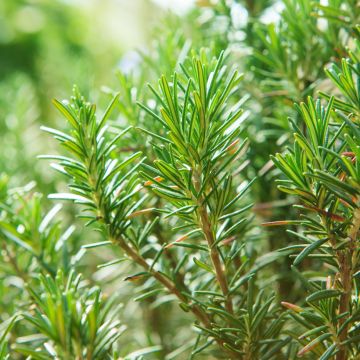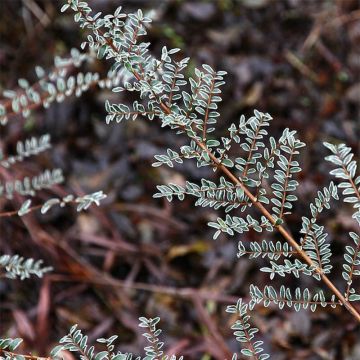Shipping country and language
Your country of residence may be:
Your country of residence is:
For a better user experience on our website, you can select:
Your shipping country:
-
Andorra
-
Austria
-
Belgium
-
Bulgaria
-
Canada
-
Chile
-
Croatia
-
Cyprus
-
Czechia
-
Denmark
-
Estonia
-
Finland
-
France
-
Germany
-
Greece
-
Hungary
-
Iceland
-
Ireland
-
Italy
-
Latvia
-
Lithuania
-
Luxembourg
-
Malta
-
Monaco
-
Netherlands
-
Poland
-
Portugal
-
Romania
-
Slovakia
-
Slovenia
-
Spain
-
Sweden
-
Switzerland
-
United Kingdom
We only deliver seed and bulb products to your country. If you add other products to your basket, they cannot be shipped.
Language:
-
French
-
German
-
Spanish
-
English
-
Italian
My Account
Hello
My wish lists
Log in / Register
Existing customer?
New customer?
Create an account to track your orders, access our customer service and, if you wish, make the most of our upcoming offers.
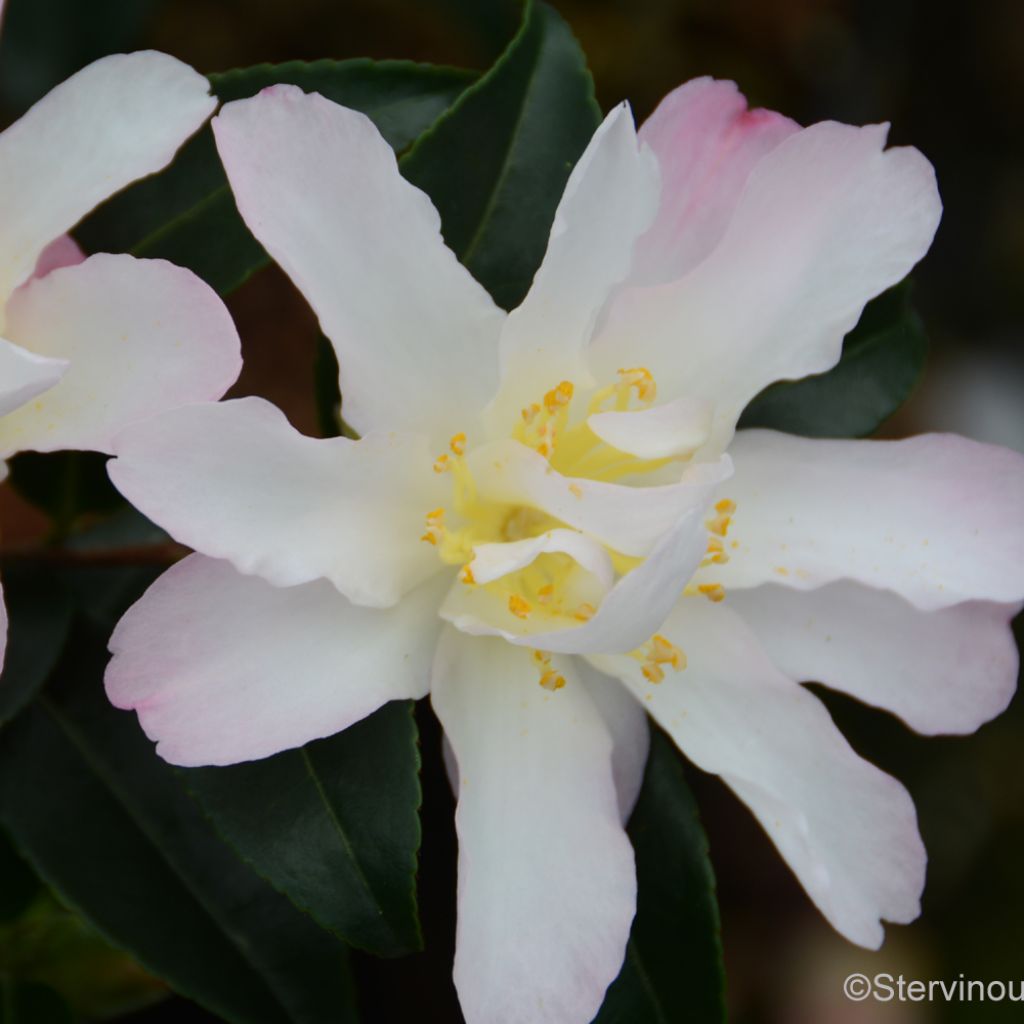

Camellia sasanqua Frosted Star
Camellia sasanqua Frosted Star
Camellia sasanqua Frosted Star
Autumn Camellia, Christmas Camellia
Planted in the spring, it has thrived during the summer and has lots of buds, but it is now January and they still haven't opened (only one timidly starting). Is it really a pendulous young plant?
Max, 06/01/2021
Order in the next for dispatch today!
Dispatch by letter from €3.90.
Delivery charge from €5.90 Oversize package delivery charge from €6.90.
More information
This item is not available in your country.
Schedule delivery date,
and select date in basket
This plant carries a 24 months recovery warranty
More information
We guarantee the quality of our plants for a full growing cycle, and will replace at our expense any plant that fails to recover under normal climatic and planting conditions.
From €5.90 for pickup delivery and €6.90 for home delivery
Express home delivery from €8.90.

Does this plant fit my garden?
Set up your Plantfit profile →
Description
Camellia sasanqua 'Frosted Star', an Autumn Camellia, is an extraordinary recent variety that produces unique semi-double star-shaped flowers. They are translucent white shaded with soft pink, and highly fragrant. Pale and waxy, their blooms evoke those of star magnolias when they come out in November on a darkly elegant, perfectly glossy evergreen foliage. This amazing bush is also captivating for its naturally compact and very modern appearance. It should be planted in partial shade, in limestone-free soil that remains moist in summer.
The 'Frosted Star' camellia is a recent hybrid derived from the Camellia sasanqua species, which belongs to the Theaceae family. This plant forms a compact, upright and bushy shrub, with relatively slow growth, reaching a height of 1m (3 ft) and a width of 0.80m (2.7 ft) in 10 years. Its adult size can reach 1.5m to 2m (4ft to 7 ft). It blooms relatively late for an autumn camellia, in November and December. The flowers are composed of several rows of somewhat irregular, narrow, spatula-shaped petals, arranged in a star around a centre that mixes unusual small petals with a few golden stamens. Although they are not long-lasting, these strange flowers constantly renew themselves on the plant, leaving a carpet of petals on the ground when they fade, just like cherry trees in Japan. The dense and evergreen foliage is composed of small, narrow, dark green, shiny, leathery leaves, paler on the underside.
Camellia sasanqua 'Frosted Star' performs better in mild climates than in cold regions, where its hardiness is sometimes insufficient and its flowering can be destroyed. Wherever winter is not too harsh it can be planted in the garden as a standalone specimen or combined with other acid-loving plants (Rhododendron, azaleas, Hydrangea, Hamamelis) in a small flowering hedge. The 'Frosted Star' Camellia, with its naturally compact silhouette and exceptional flowering, deserves a prime location on the terrace, near the entrance of the house, or along a pathway. You can dress its base with autumn bulbs such as colchicum or cyclamen. In colder regions it is best planted on a balcony or terrace, to be sheltered in a veranda or cold greenhouse during the flowering period. It can be protected from the cold inside the house, provided its foliage is regularly misted and it is watered with non-calcereous water.
Report an error about the product description
Camellia sasanqua Frosted Star in pictures
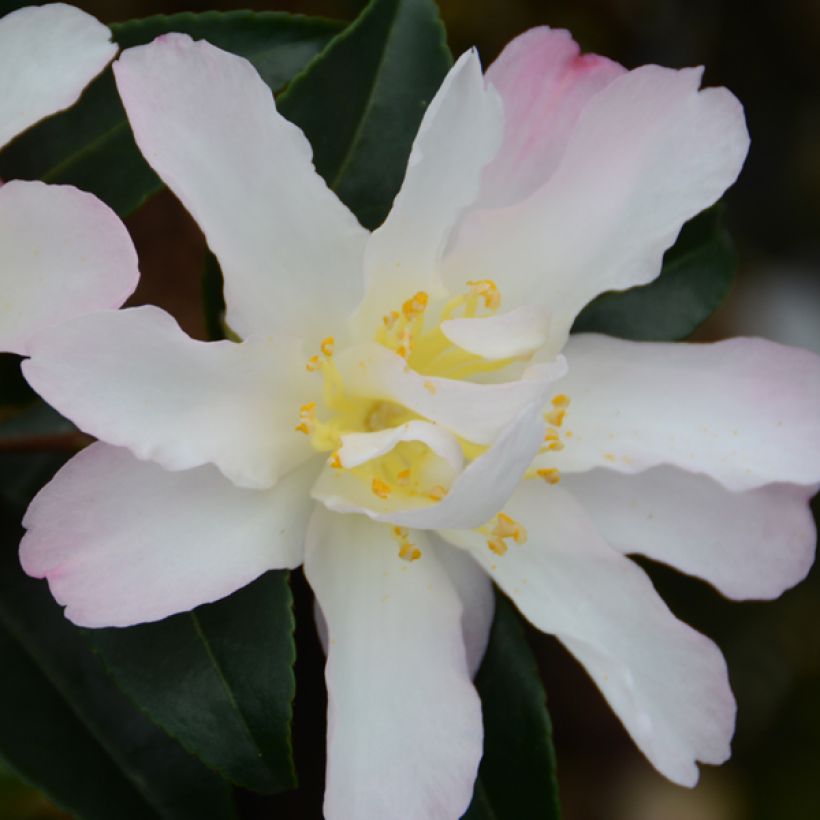

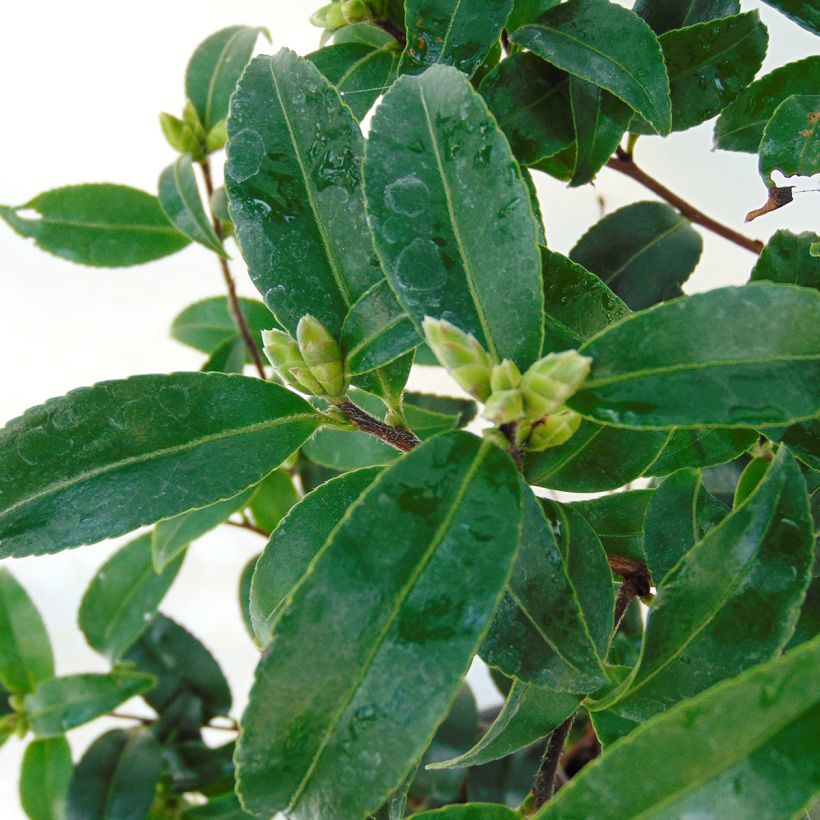

Plant habit
Flowering
Foliage
Botanical data
Camellia
sasanqua
Frosted Star
Theaceae
Autumn Camellia, Christmas Camellia
Cultivar or hybrid
Other Autumn Camellia
Planting and care
Place your Camellia sasanqua in a fairly shady spot, sheltered from cold and drying winds. It can be cultivated in a sunnier site provided its roots remain cool. Plant it in a cool, humus-rich, acidic, and well-drained soil. Do not plant the bush too deeply; cover the top of the root ball with 3 cm (1.2 in) of soil. In winter cover it with a 5 to 7 cm (2 to 3 in) thick mulch composed of leaf compost and shredded bark. Beware of late frosts that can damage the flowers and buds. Water during dry periods to prevent the bush dropping its flower buds. Pruning is done every year after flowering. Lightly prune any stems that prevent the bush maintaining its compact appearance. Remove faded flowers if you don't want fruit and remove dead shoots. An adult Camellia can withstand hard pruning. Camellia sasanqua can be susceptible to root rot, leaf spots, and viruses. It can be attacked by aphids and scale insects that cause sooty mould, as well as by weevils.
Planting period
Intended location
Care
-
, onOrder confirmed
Reply from on Promesse de fleurs
Evergreen shrubs
Haven't found what you were looking for?
Hardiness is the lowest winter temperature a plant can endure without suffering serious damage or even dying. However, hardiness is affected by location (a sheltered area, such as a patio), protection (winter cover) and soil type (hardiness is improved by well-drained soil).

Photo Sharing Terms & Conditions
In order to encourage gardeners to interact and share their experiences, Promesse de fleurs offers various media enabling content to be uploaded onto its Site - in particular via the ‘Photo sharing’ module.
The User agrees to refrain from:
- Posting any content that is illegal, prejudicial, insulting, racist, inciteful to hatred, revisionist, contrary to public decency, that infringes on privacy or on the privacy rights of third parties, in particular the publicity rights of persons and goods, intellectual property rights, or the right to privacy.
- Submitting content on behalf of a third party;
- Impersonate the identity of a third party and/or publish any personal information about a third party;
In general, the User undertakes to refrain from any unethical behaviour.
All Content (in particular text, comments, files, images, photos, videos, creative works, etc.), which may be subject to property or intellectual property rights, image or other private rights, shall remain the property of the User, subject to the limited rights granted by the terms of the licence granted by Promesse de fleurs as stated below. Users are at liberty to publish or not to publish such Content on the Site, notably via the ‘Photo Sharing’ facility, and accept that this Content shall be made public and freely accessible, notably on the Internet.
Users further acknowledge, undertake to have ,and guarantee that they hold all necessary rights and permissions to publish such material on the Site, in particular with regard to the legislation in force pertaining to any privacy, property, intellectual property, image, or contractual rights, or rights of any other nature. By publishing such Content on the Site, Users acknowledge accepting full liability as publishers of the Content within the meaning of the law, and grant Promesse de fleurs, free of charge, an inclusive, worldwide licence for the said Content for the entire duration of its publication, including all reproduction, representation, up/downloading, displaying, performing, transmission, and storage rights.
Users also grant permission for their name to be linked to the Content and accept that this link may not always be made available.
By engaging in posting material, Users consent to their Content becoming automatically accessible on the Internet, in particular on other sites and/or blogs and/or web pages of the Promesse de fleurs site, including in particular social pages and the Promesse de fleurs catalogue.
Users may secure the removal of entrusted content free of charge by issuing a simple request via our contact form.
The flowering period indicated on our website applies to countries and regions located in USDA zone 8 (France, the United Kingdom, Ireland, the Netherlands, etc.)
It will vary according to where you live:
- In zones 9 to 10 (Italy, Spain, Greece, etc.), flowering will occur about 2 to 4 weeks earlier.
- In zones 6 to 7 (Germany, Poland, Slovenia, and lower mountainous regions), flowering will be delayed by 2 to 3 weeks.
- In zone 5 (Central Europe, Scandinavia), blooming will be delayed by 3 to 5 weeks.
In temperate climates, pruning of spring-flowering shrubs (forsythia, spireas, etc.) should be done just after flowering.
Pruning of summer-flowering shrubs (Indian Lilac, Perovskia, etc.) can be done in winter or spring.
In cold regions as well as with frost-sensitive plants, avoid pruning too early when severe frosts may still occur.
The planting period indicated on our website applies to countries and regions located in USDA zone 8 (France, United Kingdom, Ireland, Netherlands).
It will vary according to where you live:
- In Mediterranean zones (Marseille, Madrid, Milan, etc.), autumn and winter are the best planting periods.
- In continental zones (Strasbourg, Munich, Vienna, etc.), delay planting by 2 to 3 weeks in spring and bring it forward by 2 to 4 weeks in autumn.
- In mountainous regions (the Alps, Pyrenees, Carpathians, etc.), it is best to plant in late spring (May-June) or late summer (August-September).
The harvesting period indicated on our website applies to countries and regions in USDA zone 8 (France, England, Ireland, the Netherlands).
In colder areas (Scandinavia, Poland, Austria...) fruit and vegetable harvests are likely to be delayed by 3-4 weeks.
In warmer areas (Italy, Spain, Greece, etc.), harvesting will probably take place earlier, depending on weather conditions.
The sowing periods indicated on our website apply to countries and regions within USDA Zone 8 (France, UK, Ireland, Netherlands).
In colder areas (Scandinavia, Poland, Austria...), delay any outdoor sowing by 3-4 weeks, or sow under glass.
In warmer climes (Italy, Spain, Greece, etc.), bring outdoor sowing forward by a few weeks.
